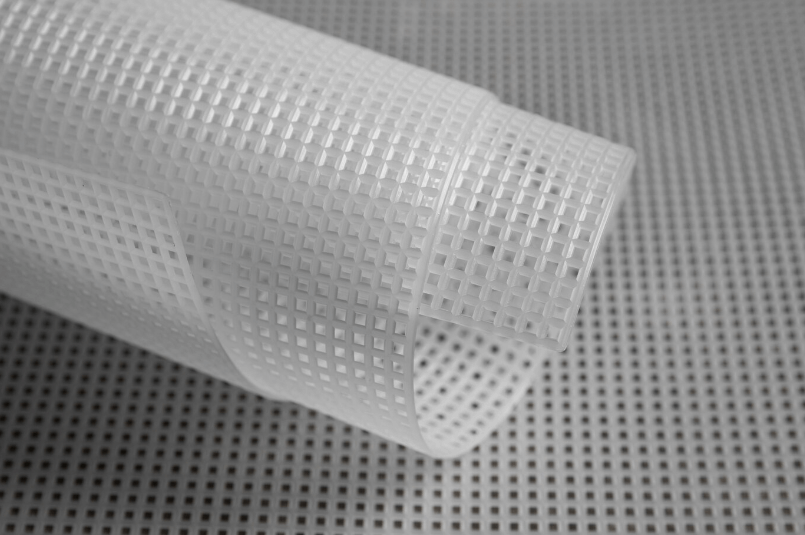When it comes to keeping a building warm in the winter and cool in the summer, insulation is key. It acts as a barrier, preventing the transfer of heat between the inside and outside of a structure. One of the most commonly used insulation materials is polyisocyanurate, a rigid foam board.
Polyisocyanurate insulation is known for its high R-value, which measures the material’s resistance to heat flow. The R-value indicates how effective the insulation is in preventing heat transfer. An insulation material with a higher R-value provides better thermal resistance and therefore better energy efficiency.
However, analyzing the polyisocyanurate R-value is not as simple as looking at a single number. There are several factors that can affect the R-value, such as the thickness of the insulation, the density of the foam, and the presence of any air gaps or moisture. It is important to consider these factors when evaluating the performance of polyisocyanurate insulation.
In addition to its high R-value, polyisocyanurate insulation also has other advantages. It is lightweight, making it easy to handle and install. It is also resistant to moisture, which is essential for maintaining the insulation’s performance over time. Polyisocyanurate insulation is commonly used in commercial and residential applications, including roofing, walls, and foundation insulation.
In conclusion, analyzing the polyisocyanurate R-value for insulation is crucial for understanding its effectiveness in thermal resistance. With its high R-value, lightweight nature, and moisture resistance, polyisocyanurate insulation is a popular choice for energy-efficient buildings. By considering all factors that can affect the R-value, builders and homeowners can make informed decisions when selecting insulation materials.
Analyzing the Polyisocyanurate R-Value
Polyisocyanurate insulation is a popular choice for building insulation due to its high R-value. The R-value measures the thermal resistance of an insulation material, indicating how well it resists heat flow. Analyzing the polyisocyanurate R-value is important in determining its effectiveness in insulating a structure.
One factor to consider when analyzing the polyisocyanurate R-value is the material’s thickness. The R-value increases with thickness, as a thicker insulation provides more resistance to heat flow. It is essential to choose an appropriate thickness of polyisocyanurate insulation based on the desired level of thermal resistance.
Another factor to consider is the type of facer used in the polyisocyanurate insulation. The facer can affect the R-value by providing additional thermal resistance and preventing moisture intrusion. Common facers include foil and coated glass fiber mat, each with their own thermal properties.
Additionally, the installation of polyisocyanurate insulation can impact its R-value. Proper installation techniques, such as sealing gaps and ensuring a continuous layer of insulation, are crucial in maximizing thermal resistance. Any voids or air leaks can significantly reduce the effectiveness of the insulation.
Furthermore, it is important to remember that the stated R-value of polyisocyanurate insulation is based on laboratory testing. Real-world conditions, such as temperature variations and moisture exposure, can affect the actual thermal performance. Regular inspections and maintenance are necessary to ensure the insulation retains its desired R-value over time.
In conclusion, analyzing the polyisocyanurate R-value involves considering factors such as thickness, facer type, installation quality, and real-world conditions. By understanding these factors, builders and homeowners can make informed decisions about the insulation’s suitability for their specific needs.
Understanding Insulation
Insulation is a vital component in building construction, providing thermal resistance and reducing heat transfer between indoor and outdoor spaces. One commonly used type of insulation is polyisocyanurate, also known as PIR.
The Benefits of Polyisocyanurate Insulation
Polyisocyanurate insulation offers several advantages that make it a popular choice for many construction projects. This type of insulation has a high R-value, meaning it provides excellent thermal resistance. It can effectively reduce heat gain in the summer and heat loss in the winter, leading to energy savings and increased comfort for occupants. Additionally, polyisocyanurate insulation is lightweight and easy to install, making it ideal for a variety of applications.
Analyzing the R-Value
When considering insulation options, understanding the R-value is crucial. The R-value is a measure of the insulation’s thermal resistance, indicating how well it can prevent heat transfer. Polyisocyanurate insulation typically has a higher R-value compared to other insulation materials of the same thickness. This means that it can provide better thermal efficiency and help maintain a consistent temperature inside a building.
It’s important to note that the R-value of polyisocyanurate insulation can vary depending on factors such as installation method and environmental conditions. Therefore, it’s essential to consult product specifications and manufacturer guidelines to ensure optimal performance.
In conclusion, polyisocyanurate insulation is a versatile and effective solution for enhancing the thermal performance of buildings. Its high R-value and other beneficial properties make it a popular choice in the construction industry. By understanding the importance of insulation and analyzing the R-value of polyisocyanurate, builders and homeowners can make informed decisions to create energy-efficient and comfortable spaces.
Insulation Materials
Polyisocyanurate is a commonly used material for insulation in various applications. It is known for its excellent thermal performance and high R-value. The R-value measures the insulation’s resistance to heat flow, with higher values indicating better insulation.
When analyzing insulation materials, it is important to consider factors such as the R-value, thermal conductivity, and moisture resistance. Polyisocyanurate has a high R-value, typically ranging from R-5.6 to R-8 per inch, making it an excellent choice for insulation in both residential and commercial buildings.
In addition to its high R-value, polyisocyanurate has a low thermal conductivity, which means it is effective at reducing heat transfer. This property makes it a valuable material for insulation in walls, roofs, and floors.
Another important consideration for insulation materials is their resistance to moisture. Polyisocyanurate has a closed-cell structure, which makes it highly resistant to water absorption. This feature helps prevent moisture damage and mold growth, improving the overall durability and longevity of the insulation.
In conclusion, polyisocyanurate is a highly effective insulation material due to its high R-value, low thermal conductivity, and moisture resistance. It is a popular choice for ensuring energy efficiency and comfort in various construction projects.
What is Polyisocyanurate?
Polyisocyanurate is a type of insulation material that is widely used in construction and building applications. It is known for its high thermal resistance and excellent fire performance, making it an ideal choice for insulating buildings and improving energy efficiency.
When analyzing insulation materials, one important factor to consider is the R-value. The R-value measures the thermal resistance of the material, indicating its ability to resist heat transfer. With a high R-value, polyisocyanurate provides enhanced insulation and helps to reduce the transfer of heat between the inside and outside of a building.
Polyisocyanurate insulation is composed of a rigid foam material that contains isocyanurate units. It is typically produced in the form of boards or panels, making it easy to install and apply in various construction projects. The insulation boards are designed to fit within the cavities of a building, providing a continuous layer of thermal protection.
Advantages of Polyisocyanurate Insulation
Polyisocyanurate insulation offers several advantages over other types of insulation materials:
- High R-value: Polyisocyanurate has a high R-value, typically ranging from R-5.6 to R-8 per inch of thickness. This means that it provides excellent insulation and helps to reduce energy consumption.
- Fire resistance: Polyisocyanurate has excellent fire performance, as it is made with flame retardant additives. It can help to slow down the spread of fire and provide occupants with more time to evacuate a building.
- Moisture resistance: Polyisocyanurate insulation is known for its moisture resistance properties, making it suitable for areas with high humidity or potential water exposure.
- Lightweight and easy to install: Polyisocyanurate insulation boards are lightweight and easy to handle, allowing for quick and efficient installation in construction projects.
Conclusion
Polyisocyanurate is a versatile and effective insulation material that offers excellent thermal resistance and fire performance. Its high R-value and other advantages make it a popular choice for a wide range of construction and building applications.
| Advantages | Disadvantages |
|---|---|
| High R-value | Higher cost compared to other insulation materials |
| Fire resistance | Not suitable for all applications |
| Moisture resistance | Requires proper installation to avoid gaps or voids |
| Lightweight and easy to install |
The Importance of R-Value
When analyzing insulation materials, such as polyisocyanurate, one of the key factors to consider is the R-value. The R-value is a measure of the material’s ability to resist the flow of heat. It indicates how well the insulation will perform in terms of keeping heat in or out of a space.
The R-value is important for several reasons. Firstly, it determines the energy efficiency of a building or structure. Insulation with a higher R-value will provide better thermal resistance, reducing the amount of energy needed to heat or cool a space. This can result in significant energy savings and lower utility bills.
Secondly, the R-value is a crucial consideration when complying with building codes and standards. Building regulations often specify a minimum R-value requirement for insulation, ensuring that structures are adequately insulated and energy efficient.
The Role of Polyisocyanurate in R-Value
Polyisocyanurate insulation is known for its high R-value per inch of thickness. This means that it provides a greater thermal resistance compared to other insulation materials of the same thickness. Its closed-cell structure and use of blowing agents with low heat conductivity contribute to its excellent insulation performance.
The high R-value of polyisocyanurate insulation makes it a popular choice for insulating a variety of applications, including roofs, walls, and floors. It helps reduce heat transfer and increase energy efficiency, creating a more comfortable and sustainable living or working environment.
Understanding R-Value Ratings
When selecting insulation materials, it’s important to understand R-value ratings and their significance. The R-value is typically provided by insulation manufacturers, indicating the material’s thermal resistance. The higher the R-value, the greater the insulating power.
However, it’s important to note that the R-value is influenced by various factors, including temperature, moisture, and installation techniques. It’s crucial to consider these factors when determining the appropriate R-value for a particular application.
| Insulation Material | R-Value per inch |
|---|---|
| Polyisocyanurate | 6.0 – 7.2 |
| Fiberglass | 2.2 – 4.0 |
| Cellulose | 3.2 – 3.7 |
As shown in the table above, polyisocyanurate insulation has a significantly higher R-value per inch compared to other common insulation materials. This makes it an excellent choice for achieving high thermal resistance and energy efficiency in buildings and structures.
In conclusion, the R-value of insulation materials, such as polyisocyanurate, plays a crucial role in determining energy efficiency and complying with building codes. Understanding the R-value ratings and selecting the appropriate insulation material can help create sustainable and comfortable environments with reduced energy consumption.
Factors Affecting R-Value
The R-value of polyisocyanurate insulation is influenced by a variety of factors that can impact its effectiveness in reducing heat transfer. Understanding these factors is essential for choosing the right insulation material for a specific application.
Material Thickness
The thickness of polyisocyanurate insulation directly affects its R-value. As a general rule, the thicker the insulation, the higher its R-value. Thicker insulation provides a greater resistance to heat flow, resulting in improved thermal insulation performance.
Density
The density of polyisocyanurate insulation also plays a role in determining its R-value. Higher-density insulation generally has a higher R-value compared to lower-density insulation. This is because higher-density insulation contains more trapped air pockets, which contribute to its thermal resistance.
Additionally, higher-density insulation is more resistant to moisture absorption, making it suitable for applications where moisture control is important.
Installation Quality
The quality of installation affects the R-value of polyisocyanurate insulation. Proper installation ensures that there are no gaps or compressed areas within the insulation material. Any gaps or compression can reduce the overall R-value by allowing heat to bypass the insulation. It is important to follow manufacturer guidelines and recommendations for proper installation techniques to achieve the desired R-value.
Furthermore, effective vapor barriers and air sealing techniques are crucial for preventing air infiltration and condensation, as they can significantly impact the performance of insulation materials.
Other factors, such as thermal bridging, exposure to extreme temperatures, and aging, can also affect the R-value of polyisocyanurate insulation. It is important to take these factors into consideration when selecting and designing an insulation system to ensure optimal thermal performance.
How to Calculate R-Value
To properly analyze the polyisocyanurate insulation, it is important to understand how to calculate its R-Value. The R-Value measures the thermal resistance of a material, indicating its ability to resist heat flow through conduction, convection, and radiation.
The formula to calculate the R-Value is:
R-Value = Thickness / Thermal Conductivity
The thickness is the physical thickness of the polyisocyanurate insulation, measured in inches or millimeters. The thermal conductivity represents the ability of the material to conduct heat, measured in units of W/m·K (Watts per meter per Kelvin).
When calculating the R-Value, it is important to note that thicker insulation and lower thermal conductivity values will result in a higher R-Value. The higher the R-Value, the more effective the insulation is at reducing heat flow.
It is also worth mentioning that the R-Value of a material can be additive, meaning that the R-Value of multiple layers of insulation can be summed to determine the overall R-Value of the system.
In conclusion, understanding how to calculate the R-Value of polyisocyanurate insulation is crucial for properly analyzing its thermal resistance. By considering the thickness and thermal conductivity, one can determine the effectiveness of the insulation in reducing heat flow and making informed decisions in regards to energy efficiency and insulation requirements.
Comparing R-Values
When it comes to analyzing the R-value of insulation materials, it is important to compare different options to determine the best choice for your specific needs. In this article, we will compare the R-value of polyisocyanurate insulation with other commonly used insulation materials.
Polyisocyanurate Insulation
Polyisocyanurate insulation, often abbreviated as polyiso, is a popular choice for both residential and commercial applications. It boasts one of the highest R-values per inch among commonly used insulation materials. The R-value of polyisocyanurate insulation typically ranges from R-5.6 to R-8 per inch, making it an excellent choice for areas with limited space for insulation.
Fiberglass Insulation
Fiberglass insulation is one of the most common types of insulation materials. It is made of fine glass fibers and is relatively easy to install. However, it has a lower R-value compared to polyisocyanurate insulation. The R-value of fiberglass insulation ranges from R-3 to R-4 per inch. While it may be a more cost-effective option, it may require thicker insulation to achieve the same level of thermal resistance as polyisocyanurate insulation.
Spray Foam Insulation
Spray foam insulation is a versatile insulation material that expands upon application, filling gaps and creating a seamless barrier. It has a high R-value per inch, similar to polyisocyanurate insulation. The R-value of spray foam insulation typically ranges from R-6 to R-7 per inch. While it may be more expensive than other insulation options, its superior air sealing properties can lead to significant energy savings in the long run.
Conclusion
When comparing the R-values of different insulation materials, it is clear that polyisocyanurate insulation offers one of the highest thermal resistances per inch. This makes it an ideal choice for areas where space is limited and maximum insulation performance is desired. However, it is important to consider other factors such as cost, ease of installation, and specific application requirements when selecting the most suitable insulation material for your project.
Polyisocyanurate vs. Other Insulation Materials
When analyzing insulation materials, polyisocyanurate stands out as a top choice for its exceptional thermal performance. This type of insulation offers a high R-value, which measures its ability to resist heat flow. Polyisocyanurate insulation provides an impressively high R-value compared to other commonly used insulation materials.
One of the major advantages of polyisocyanurate insulation is its exceptional efficiency. It has one of the highest R-values per inch of thickness, allowing for maximum insulation in smaller spaces. This efficiency makes it a popular choice for commercial and residential applications alike.
In comparison to other insulation materials, such as fiberglass or cellulose, polyisocyanurate insulation surpasses in terms of thermal resistance. It provides a superior level of insulation, ensuring a more effective barrier against heat transfer. This makes polyisocyanurate insulation a valuable choice for homeowners and builders who prioritize energy efficiency and insulation performance.
Additionally, polyisocyanurate insulation offers excellent fire resistance properties. It is manufactured with fire-retardant additives, making it a safer option for insulation purposes. This added safety feature makes it a desirable choice for projects that require enhanced fire protection.
Furthermore, polyisocyanurate insulation exhibits excellent moisture resistance. Its closed-cell structure prevents moisture infiltration, reducing the risk of water damage or mold growth. This feature contributes to the longevity and durability of the insulation, ensuring long-term effectiveness.
In conclusion, polyisocyanurate insulation outperforms other insulation materials in terms of thermal performance, efficiency, fire resistance, and moisture resistance. Its high R-value and exceptional properties make it a top choice for various applications, from residential homes to commercial buildings. When analyzing insulation options, polyisocyanurate should be considered for its superior insulation qualities and long-lasting benefits.
Applications of Polyisocyanurate Insulation
Polyisocyanurate insulation is an incredibly versatile material with a wide range of applications in various industries. Its excellent thermal performance, as measured by its high R-value, makes it a popular choice for many insulation needs. Here are some key applications of polyisocyanurate insulation:
Residential insulation
Polyisocyanurate insulation is commonly used in residential buildings to improve energy efficiency and reduce heating and cooling costs. It can be installed in walls, roofs, and attics to provide a high level of thermal resistance. Its lightweight nature and ease of installation make it a preferred choice for retrofitting existing homes.
Commercial insulation
Commercial buildings, such as offices, retail spaces, and warehouses, can benefit from polyisocyanurate insulation as well. It helps regulate indoor temperatures, improves overall comfort, and reduces energy consumption. The material’s fire resistance and ability to withstand moisture make it suitable for a wide range of commercial applications.
Polyisocyanurate insulation is commonly used in the following commercial applications:
- Roof insulation
- Wall insulation
- Underfloor insulation
- Pipe insulation
- Duct insulation
Industrial insulation
Industries that require temperature-controlled environments often rely on polyisocyanurate insulation. It can be used in manufacturing plants, cold storage facilities, food processing plants, and more. The material’s high R-value and resistance to chemicals, oils, and solvents make it suitable for numerous industrial applications.
Polyisocyanurate insulation is particularly useful in the following industrial settings:
- Boilers and equipment insulation
- Pipe and duct insulation
- Tank insulation
- Refrigeration insulation
In conclusion, polyisocyanurate insulation’s high R-value and excellent thermal performance make it an ideal choice for various applications, including residential, commercial, and industrial settings. Its versatility, ease of installation, and resistance to moisture and chemicals make it a popular insulation material among professionals in different industries.
Insulation Performance and Energy Efficiency
Insulation plays a critical role in improving energy efficiency and maintaining thermal comfort in buildings. One versatile and commonly used insulation material is polyisocyanurate.
Polyisocyanurate insulation provides excellent thermal resistance, helping to minimize the transfer of heat between the interior and exterior of a building. Its high R-value signifies its ability to resist heat flow. The R-value of polyisocyanurate insulation is often higher than that of other types of insulation materials, making it an attractive option for many applications.
When analyzing the R-value of polyisocyanurate insulation, it is essential to consider factors such as thickness, density, and installation techniques. Proper installation is crucial in achieving optimal insulation performance. Inadequate installation can compromise the effectiveness of the insulation and reduce its energy-saving capabilities.
Benefits of Polyisocyanurate Insulation
There are several benefits to using polyisocyanurate insulation:
- High thermal resistance: Polyisocyanurate insulation has a high R-value, indicating its excellent ability to resist heat transfer.
- Thin profile: Polyisocyanurate insulation typically has a thinner profile compared to other insulation materials, allowing for more design flexibility and space savings.
- Moisture resistance: Polyisocyanurate insulation has inherent moisture resistance properties, making it suitable for humid environments.
- Fire resistance: Polyisocyanurate insulation materials are engineered to have high flame retardancy and can help enhance the fire resistance of buildings.
Improving Energy Efficiency
The use of polyisocyanurate insulation can significantly contribute to improving energy efficiency in buildings. When properly installed, it helps reduce heat loss or gain through walls, roofs, and floors. This reduction in heat transfer can lead to lower energy consumption for heating and cooling, resulting in cost savings and a reduced environmental impact.
To maximize the benefits of polyisocyanurate insulation, it is crucial to ensure proper installation and maintenance. Regular inspections and repairs, if needed, can help maintain the insulation’s performance over time.
Question and answer:
What is the Polyisocyanurate R-Value for insulation?
The Polyisocyanurate R-Value for insulation refers to the measure of the material’s thermal resistance. It indicates how effectively the insulation can resist the transfer of heat through it.
How is the Polyisocyanurate R-Value calculated?
The Polyisocyanurate R-Value is calculated by determining the thickness of the insulation and its thermal conductivity. The higher the R-Value, the better the insulation is at preventing heat transfer.
Is Polyisocyanurate insulation more effective than other types of insulation?
Yes, Polyisocyanurate insulation is generally considered more effective than other types of insulation. It has a higher R-Value than materials such as fiberglass or cellulose insulation, making it a popular choice for homes and commercial buildings.
Can the Polyisocyanurate R-Value vary depending on the thickness of the insulation?
Yes, the Polyisocyanurate R-Value can vary based on the thickness of the insulation. Generally, thicker insulation will have a higher R-Value, meaning it provides better thermal resistance.
What are some benefits of using Polyisocyanurate insulation with a high R-Value?
Using Polyisocyanurate insulation with a high R-Value can provide several benefits. It can reduce heating and cooling costs, improve overall comfort in a building, and help to increase energy efficiency.
What is the R-value of polyisocyanurate insulation?
The R-value of polyisocyanurate insulation typically ranges from 6.5 to 7.2 per inch of thickness.







